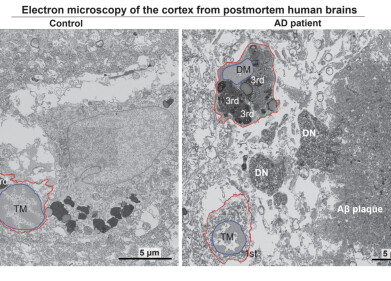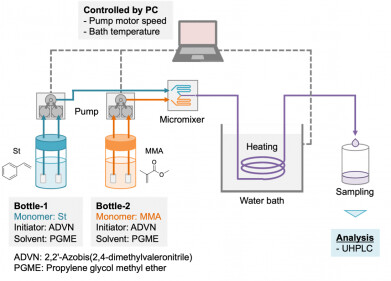-
 Nathalie Juge (Credit: Quadram Institute)
Nathalie Juge (Credit: Quadram Institute) -
 Simon Funnell
Simon Funnell -
 Changes triggered by SARS CoV 2 infection in lung on chip alveoli cells (Credit: Tanja Suligoj and Catherine Booth Quadram Institute)
Changes triggered by SARS CoV 2 infection in lung on chip alveoli cells (Credit: Tanja Suligoj and Catherine Booth Quadram Institute)
Research News
New model to help combat coronavirus
Sep 11 2024
A human “lung-on-chip” model designed to recreate how SARS-CoV-2 infects lung cells has been established by researchers from the Quadram Institute in conjunction with UK Health Security Agency (UKHSA). Their research has been shown to successfully mimic the way SARS-CoV-2 virus infects cells, triggering characteristic changes in the cells seen in human infections as well as recapitulating early immune response and release of new virus particles.
One aspect of the study was developing ways of being able to investigate at the cellular level exactly how the virus infects us, both in the upper airways and also the lower airways and alveoli where more severe infection could lead to respiratory failure.
To achieve an accurate model of the human alveolus and the cells at the interface with the air, Professor Nathalie Juge and Dr Tanja Šuligoj from the Quadram Institute partnered with microphysical systems (Organ-Chips) specialist Emulate Inc. of Boston, USA. They adapted the company’s Alveolus Lung Chip, using a combination of human alveoli lining cells and lung microvascular endothelial cells connected to a laboratory simulation of the fluid that flows through the lung. Once the cells were established, an airflow was introduced alongside mechanical flexing of the chips to copy the inflation and deflation of alveoli during breathing.
The team then worked with Dr Simon Funnell and colleagues from UKHSA to assess the suitability of the system for the study of SARS-CoV-2 infection in the Quadram Institute’s containment Level 3 (CL3) facility.
There was clear evidence of virus replication in the cells in all the chips tested, with a high level of the virus detectable a day after infection and lasting until day three. This is comparable with the timeline of virus shedding in COVID-19 patients.
“We were pleased to be able to pivot our expertise in organ-on-chip models to contribute to the international effort to fight SARS-CoV-2 during the COVID-19 pandemic,” said Professor Juge. “The capacity to successfully infect lung-on-chips in Quadram’s CL3 was a milestone and we are pleased to have helped transfer this expertise to UKHSA. This infection model recapitulates clinically relevant effects that can be used to combat emerging infectious respiratory diseases."
UKHSA are continuing to develop this model to characterise virus infections with Coronaviruses with an aim to develop a human-relevant platform to assess new drugs and treatments against past, current and future coronavirus threats.
“UKHSA is proud to be supporting this area of research. Systems such as these are becoming increasingly important in understanding the effectiveness of new drugs and play an important role in our preparation for future pandemics,” said Dr Kevin Bewley, Scientific lead of Virology and Non-animals Technologies group, within the Vaccine Development and Evaluation Centre at UKHSA.
The work was supported by the U.S. Food and Drug Administration and the Biotechnology and Biological Sciences Research Council (BBSRC), part of UKRI.
Digital Edition
Lab Asia 31.6 Dec 2024
December 2024
Chromatography Articles - Sustainable chromatography: Embracing software for greener methods Mass Spectrometry & Spectroscopy Articles - Solving industry challenges for phosphorus containi...
View all digital editions
Events
Jan 22 2025 Tokyo, Japan
Jan 22 2025 Birmingham, UK
Jan 25 2025 San Diego, CA, USA
Jan 27 2025 Dubai, UAE
Jan 29 2025 Tokyo, Japan


















